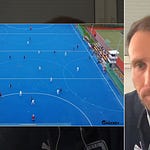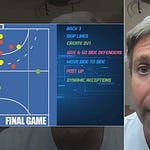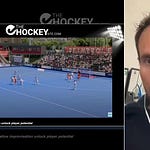When it comes to coaching field hockey, it’s tempting to focus on the flashy tactics, the set plays, and the latest trends in game strategy. But if there’s one thing this Leap Hockey masterclass makes clear, it’s that the foundational skill of the grip remains underappreciated—and yet it’s the key detail that can unlock player performance at every level.
It’s a common refrain in field hockey coaching circles: “Get the basics right.” Still, as coaches, we tend to skip past the grip after our first few years on the pitch. However, as Adam and Ross emphasized throughout the workshop, grip, specifically how players position and transition their hands for different techniques, is the hidden engine behind so much of our sport’s ball control, passing consistency, defensive presence, and attacking creativity.
Why does this matter in daily training? First, correct grip habits accelerate technical development, especially for younger players. As Adam pointed out:
If we can get the hands in the right position for different techniques, then we’re off to a really good start in creating good hockey fundamentals.
What’s equally important is that grip isn’t just a ‘starting point’; it’s an ongoing focus, even with seasoned athletes or national-level squads. Habits change over time, muscle memory can drift, and subtle variations in hand positioning, whether catching, tackling, or drag flicking, can be the difference between a clean skill and an inconsistent result.
So, how should a coach leverage this insight? Here’s what the masterclass suggested:
Regularly Observe and Correct: Don’t just assume established players have a solid grip. Briefly observe grip during specific skill drills (receiving, ball carrying, aerials) and give direct feedback if you spot inefficiencies—even with older athletes. As Adam Falla explained:
Bad habits creep into the fundamentals all the time. If it’s wrong, it’s wrong. And you’ve got to kind of have the confidence to say… your grip here is a few inches off.
Integrate Grip Variation into Drills: Use exercises where players are required to transition rapidly between different grips (e.g., frying pan to hammer during defense) to improve their adaptability. This is essential in defensive phases, as grip changes can make or break a seamless tackle sequence.
Focus on Grip for Power and Control, Not Just Technique: The masterclass provided actionable examples: moving the right hand down for receiving not only enhances trapping but gets players lower, in stronger body positions. Meanwhile, adjusting left-hand rotation for aerials or drag flicks can dramatically change ball flight or whip.
Normalize Grip Discussion With Advanced Players: Don’t shy away from ‘basic’ grip corrections with top-level athletes. Even the world’s best benefit from periodic checks—think of it as maintenance on an elite race car rather than fixing a problem with a learner. Grip tweaks in ball carrying, for example, allow vision and decision making to flourish. As Adam pointed out:
I think a good kind of example from another sport is the golf swing... Tiger Woods or whoever, they’re still getting a coach looking at very, very basic parts of their grip. The best player who’s ever played the world, his grip may shift over time because it’s just a tiny amount of detail. And he can’t tell that even as Tiger Woods, right, he still had a coach to guide him.
What Coaches Can Do Tomorrow
Start every technical session by watching hand placement and challenging players to discuss or show their grip transitions.
Build “grip review” periods into video analysis; use slow-motion clips on individual skills to spark conversation.
Foster a culture where grip correction is seen as continual improvement, not criticism—coaches should aim for direct, clinical feedback.
Above all, treat grip as a living detail of technical coaching. The moments spent coaching it are never wasted.
So if you’ve been fixated on drills, structures, and formations, take this as a moment to look down—not at your shoes, but at the players’ hands. Tomorrow’s improvements start there.
We encourage you to also sign up to Leap Hockey from the button below to get immediate free access to 4 more videos on the grip from Adam and Ross.
But you will want to watch the full masterclass video here first 😉
Why You’ll Want to Watch the Full Masterclass Video
If you coach field hockey at any level, the nuances in grip and hand placement—demonstrated and debated in real time by the Leap Hockey team—will challenge your assumptions, improve your own observational skills, and provide immediate solutions to common technical problems.
The video explores specific skills (receiving, defending, the aerial, drag flicking) in detail, with on-pitch demonstrations that bridge the gap between theory and practice. Watching the full video exposes you to subtle but powerful coaching points—many of which are impossible to capture in text alone. It arms you with a stronger visual and mental framework for your next session. For coaches committed to technical excellence, this is material you’ll want to digest, share, and revisit.
Ready to dig deeper? Below, for our paid subscribers, we’ll break down the three biggest coaching takeaways from the masterclass and offer practical guidance for applying these insights to your day-to-day work.Listen to this episode with a 7-day free trial
Subscribe to The Hockey Site to listen to this post and get 7 days of free access to the full post archives.












